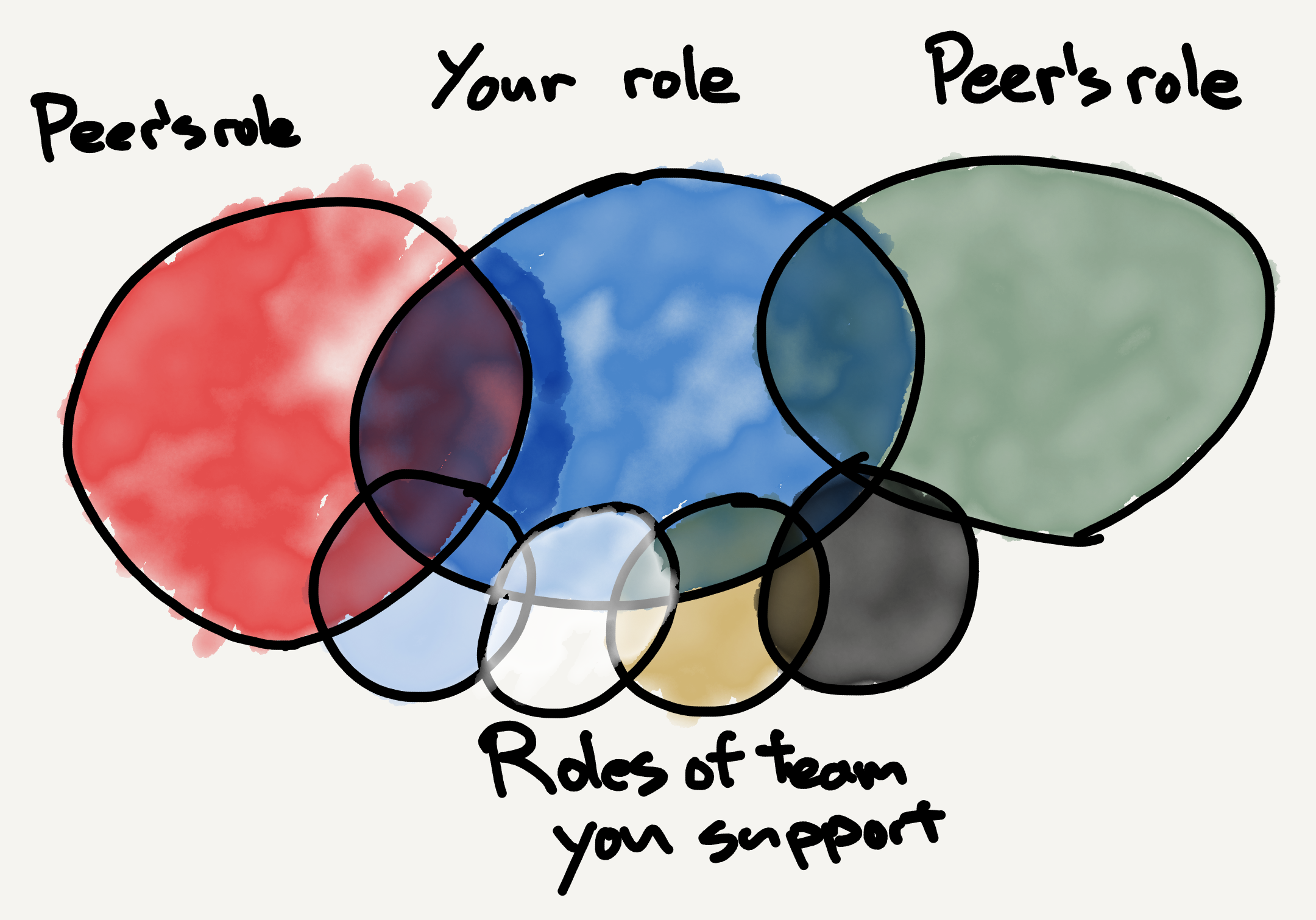
Succession planning.
Two or three years into a role, you may find that your personal rate of learning has trailed off. You know your team well, the industry particulars are no longer quite as intimidating, the mystery of getting things done at your company solved. This can be a sign to start looking for your next role, but it’s also a great opportunity to build experience with succession planning.
Succession planning is thinking through how the organization would function without you, documenting those gaps, and starting to fill them in. It’s awkward enough to talk about that it doesn’t get much discussion, but it’s a foundational skill for building an enduring organization.
What do you do?
The first step in succession planning is to figure out what you do. This seems like it should be easy, but I’ve found it surprisingly hard! There are the obvious things you do–1:1s, meetings, headcount planning–but you’re probably filling in a hundred little holes that you don’t even think about.
The approach I’ve taken is to consider your work from several different angles:
- Take a look at your calendar and write down your role in meetings. This goes for explicit roles like owning a meeting’s agenda, and also for more nuanced roles like being the first person to champion others’ ideas or the person who is diplomatic enough to raise difficult concerns.
- Take a second pass on your** calendar** for non-meeting stuff, like interviewing, closing candidates.
- Look back over the past six months for recurring processes like roadmap planning, performance calibrations, or headcount decisions, and document your role in each of those processes.
- For each of the folks you support, where are your skills and actions most complimentary to theirs? How do you help them? What do they rely on you for? Maybe it’s authorization, advice navigating the organization or experience in the technical domain.
- Audit** inbound chats and emails** for requests and questions coming your way.
- If you keep a TODO list, look at the categories of work you’ve completed over the past six months, as well as the stuff you’ve been wanting to do but keep putting off.
- Think through your external relationships that have been important for you in your current role. What are the kinds of folks that have been important, and who are the strategic partners that someone needs to know?
After exploring each of these avenues, you’ll have quite a long list of things. Test the list on a few folks that you work closely with and see if you’ve missed anything. Congratulations, now you know what your job is!
Close the gaps
Take your list and for each item try to identify the folks who could readily take on that work. Good job, cross those out.
For items without someone who is ready today, identify a handful of folks who could potentially take it over. (Depending on the size of your list, it may be helpful to cluster similar items into groups to reduce the toil of running this exercise.)
If you’re working at a well established company, you may find that there aren’t too many gaps that couldn’t be readily filled by someone else. However, if you’re at a company coming going through hypergrowth, it’s common to find that everyone is already working in the most complex role of their career, and you’ll uncover gaps gaping and cavernous.
Filter the gaps down to two lists:
- The first should cover the easiest gaps to close. Maybe it’ll require a written document or a quick introduction. You should be able to close one of these in less than four hours.
- The later will be the riskiest gaps. These as the areas where you’re uniquely valuable to the company, where other folks are missing skills, and where getting them done is truly important. You’d expect closing one of these to require ongoing effort over several months.
Write up a plan to close all of the easy gaps and one or two of the riskiest gaps. Add it to your personal goals, and then congrats, you’ve completed a round of succession planning!
This isn’t a one-time tool, but rather a great exercise to run once a year to identify things you could be delegating. This helps nurturing an enduring organization, and also frees up time for you to continue growing into a larger role as well. You can even get a sense of how well you’re doing by taking a two or three week vacation and seeing what slips through the cracks.
Those can be the start of next year’s list!